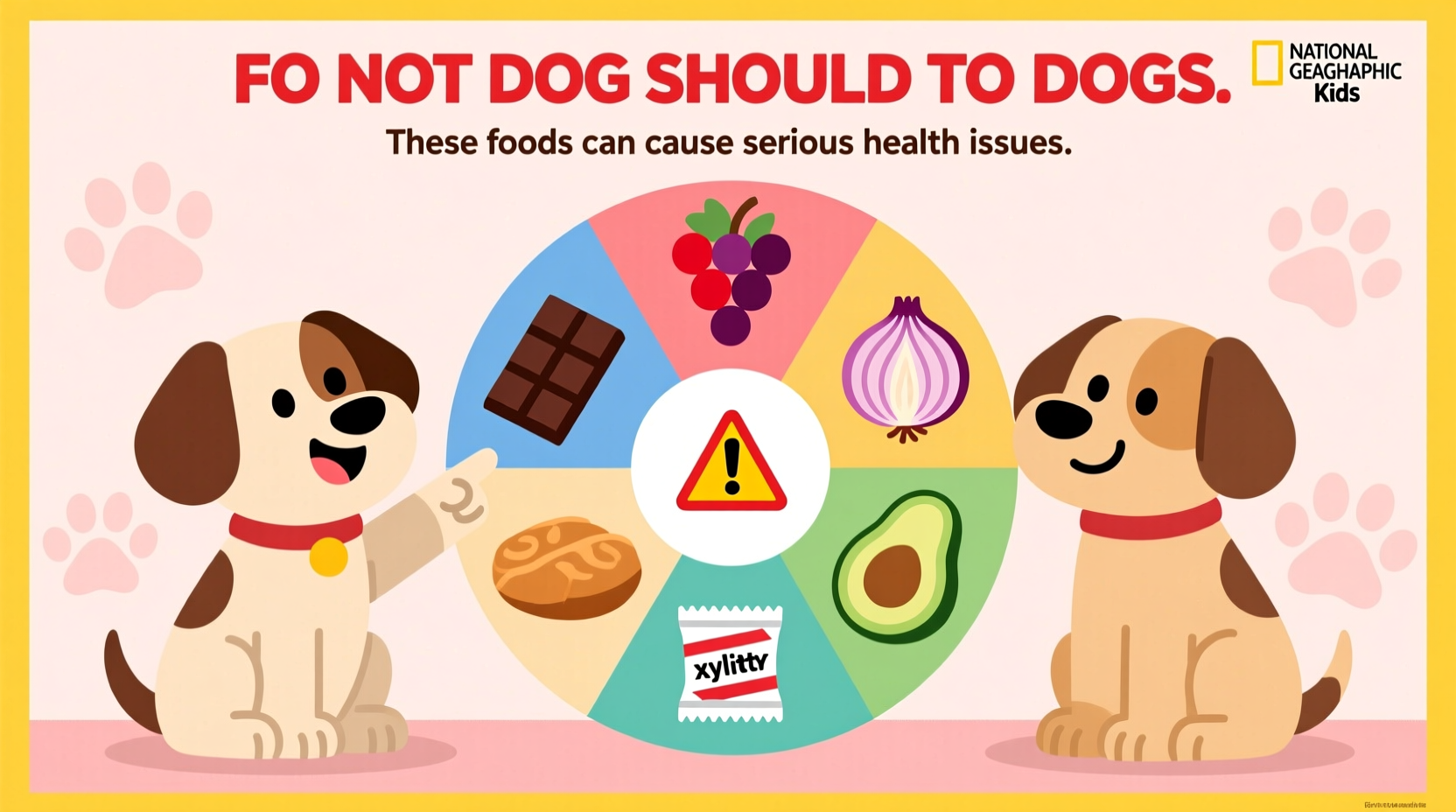Immediate danger alert: Chocolate, xylitol (in sugar-free products), grapes/raisins, onions/garlic, and macadamia nuts can cause life-threatening reactions in dogs. If your dog has consumed any of these, contact your veterinarian or the ASPCA Animal Poison Control Center (888-426-4435) immediately.
Every dog owner has faced that pleading look while enjoying a snack. But before sharing your food, you need to know which common human foods pose serious health risks to your canine companion. Understanding what foods dogs can't eat isn't just about preventing an upset stomach—it's about avoiding potentially fatal consequences.
Why Dogs React Differently to Certain Foods
Dogs process food differently than humans due to their unique metabolism and digestive systems. While we can safely enjoy many foods, dogs lack specific enzymes needed to break down certain compounds. The American Kennel Club explains that what might cause mild discomfort in humans can trigger severe reactions in dogs because of these physiological differences.
High-Risk Foods: The Dangerous Top 5
These foods consistently rank as the most dangerous for dogs based on veterinary emergency data from the ASPCA Animal Poison Control Center. The following table compares their toxicity levels and symptoms:
| Food | Toxic Compound | Minimum Dangerous Amount | Symptoms |
|---|---|---|---|
| Chocolate | Theobromine/Caffeine | 20mg/kg (milk), 3mg/kg (dark) | Vomiting, diarrhea, rapid breathing, seizures |
| Xylitol | Sugar alcohol | 0.1g per kg body weight | Hypoglycemia, liver failure, collapse |
| Grapes/Raisins | Unknown compound | 3g/kg (grapes), 0.3g/kg (raisins) | Vomiting, kidney failure, lethargy |
| Onions/Garlic | N-propyl disulfide | 15-30g per kg body weight | Weakness, pale gums, red urine (anemia) |
| Macadamia Nuts | Unknown compound | 2.4g per kg body weight | Weakness, depression, vomiting, hyperthermia |

Hidden Dangers in Common Household Items
Many dangerous foods aren't obvious threats. Xylitol, for example, appears in unexpected products:
- Sugar-free gum and mints (as little as one piece can be toxic)
- Some peanut butter brands (always check labels)
- Toothpaste and mouthwash
- Baked goods and diet foods
The Veterinary Information Network reports a 200% increase in xylitol poisoning cases over the past five years as sugar-free products have become more common.
Context Matters: When "Harmful" Foods Might Be Safe
Not all potentially problematic foods are equally dangerous in all circumstances. Understanding context boundaries is crucial:
- Avocados: The fruit flesh contains minimal persin (the toxic compound), but the pit poses choking hazards
- Bone marrow: Safe in moderation but high in fat (can cause pancreatitis)
- Coffee: A few drops likely won't harm, but whole cups can be dangerous due to caffeine content
Emergency Response Timeline: What to Do Immediately
If your dog consumes a toxic food, your response timing directly impacts their recovery chances:
- 0-30 minutes: Call your vet or animal poison control—do not wait for symptoms
- 30-60 minutes: Note the food type, amount consumed, and your dog's weight
- 1-2 hours: Follow professional guidance (inducing vomiting may be recommended only in specific cases)
- 2+ hours: Monitor for symptoms while en route to emergency care if advised
Safe Human Foods Dogs Can Enjoy
Not all human foods are off-limits. These common items make excellent occasional treats:
- Cooked plain chicken or turkey (no seasoning)
- Plain canned pumpkin (not pie filling)
- Blueberries and strawberries
- Cooked carrots and green beans
- Plain cooked sweet potato
Preventing Food-Related Emergencies
Proactive measures significantly reduce risks:
- Store toxic foods in closed cabinets (not just on counters)
- Train your dog the "leave it" command
- Use covered trash cans
- Inform all household members about dangerous foods
- Keep vet and poison control numbers visible
When to Consult Your Veterinarian
Don't wait for severe symptoms to appear. Contact your vet immediately if your dog consumes:
- Any amount of chocolate (especially dark)
- Xylitol-containing products
- Grapes or raisins
- Large quantities of onions or garlic
- Unknown substances
Early intervention dramatically improves outcomes for food-related poisoning cases. The American Veterinary Medical Association emphasizes that prompt treatment can prevent complications that might otherwise become life-threatening.











 浙公网安备
33010002000092号
浙公网安备
33010002000092号 浙B2-20120091-4
浙B2-20120091-4